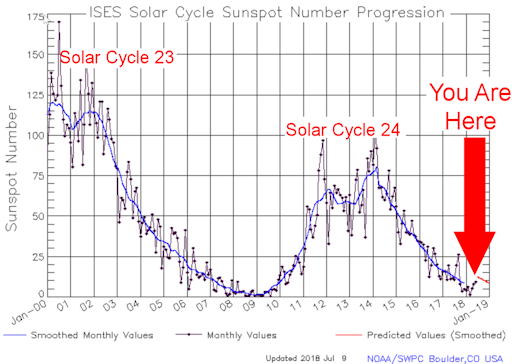There is a region of space, which may be thought of as the solar system, in which the effects of the Sun dominate the average conditions of the interstellar medium. Inside, there is the solar wind, a flux of charged particles emanating from the Sun; outside, there is a flux of galactic cosmic rays which is held at bay by the Sun's magnetic field. The heliopause is simply the name we give to the boundary.
Why might it be shrinking? Over the past several (11-year) solar cycles, it has been noted that the activity levels of the sun, measured by things like sunspots, have been waning.
That means that the Sun's magnetic field is getting weaker, and not shielding us from cosmic rays with the efficacy that it used to. And in fact, cosmic ray readings have been rising at observatories where such things are measured.
It occurred to me that we might have a direct measurement, however. The latest thing in the science news is that Voyager 2 has just crossed the heliopause, as detected by its measurements of its environment, notably the levels of cosmic rays. Voyager --> 2 <--.
Turns out that Voyager 1 crossed the heliopause some 6 years back. It was 121 AU from home. Voyager 2 just crossed the heliopause at 118 AU. So guess what, it does look like the heliopause is shrinking.
Maybe yes, maybe no. Turns out that having only two datapoints in a cyclic process, like the solar cycle, doesn't necessarily tell you a lot. We are at the bottom of a solar cycle, and Voyager 1 came out at the top of one:

No comments:
Post a Comment